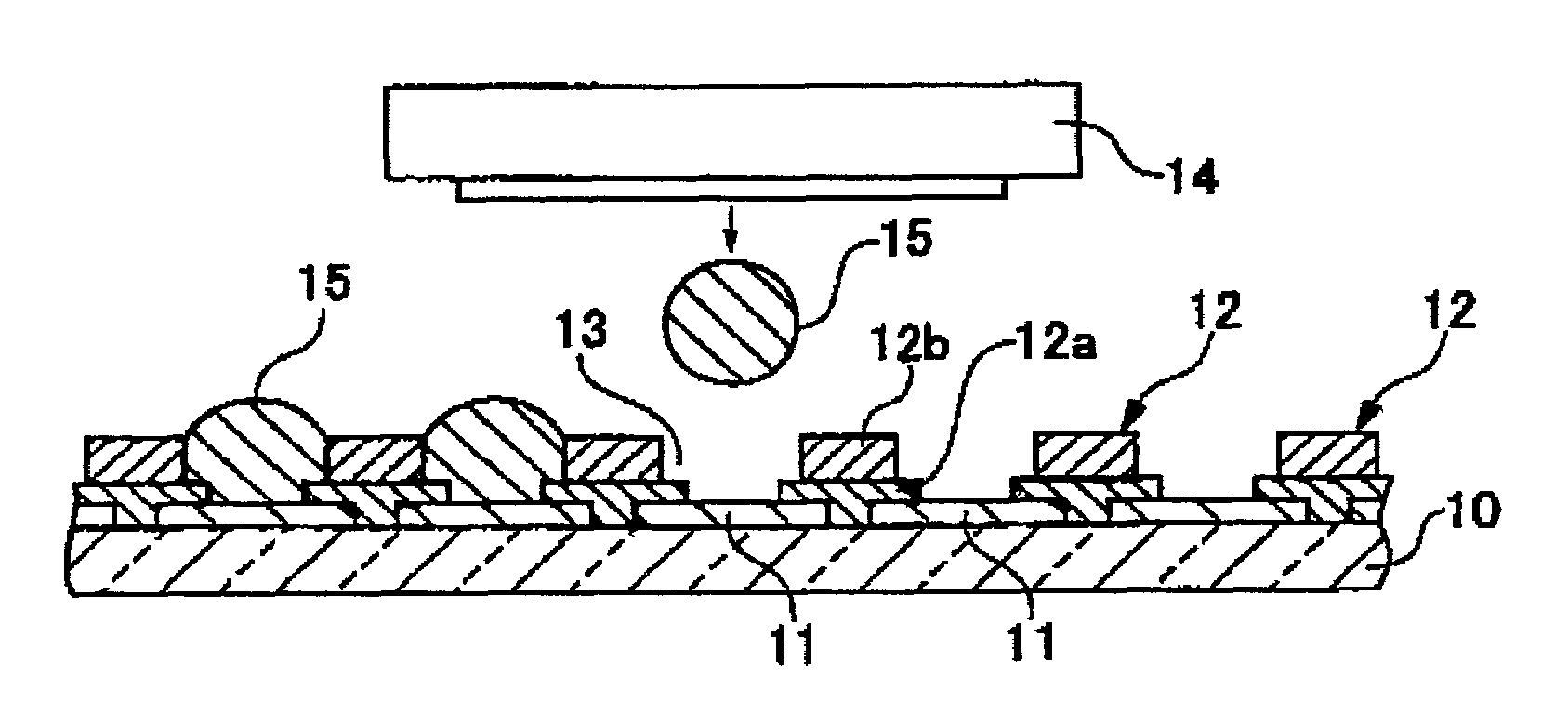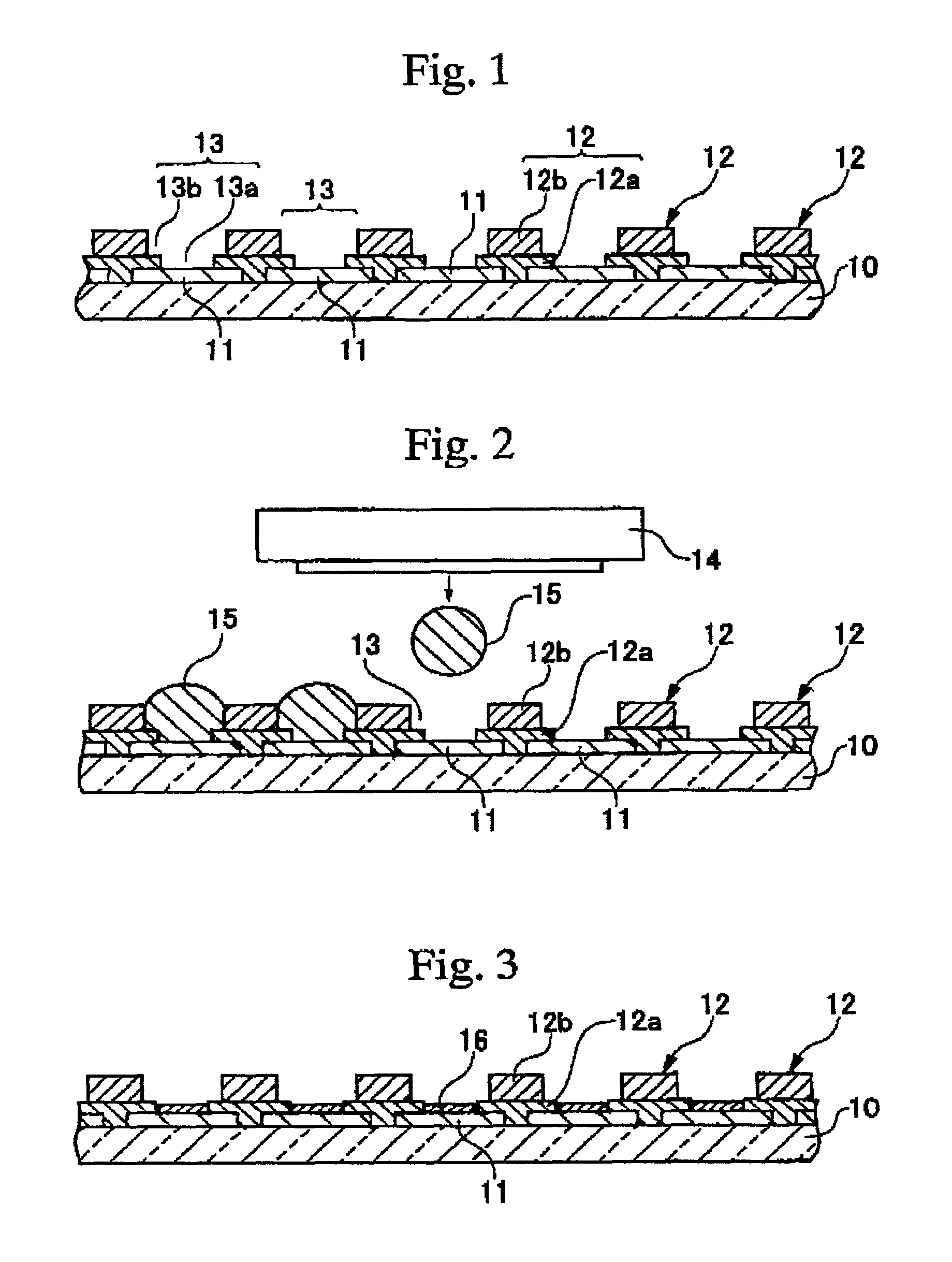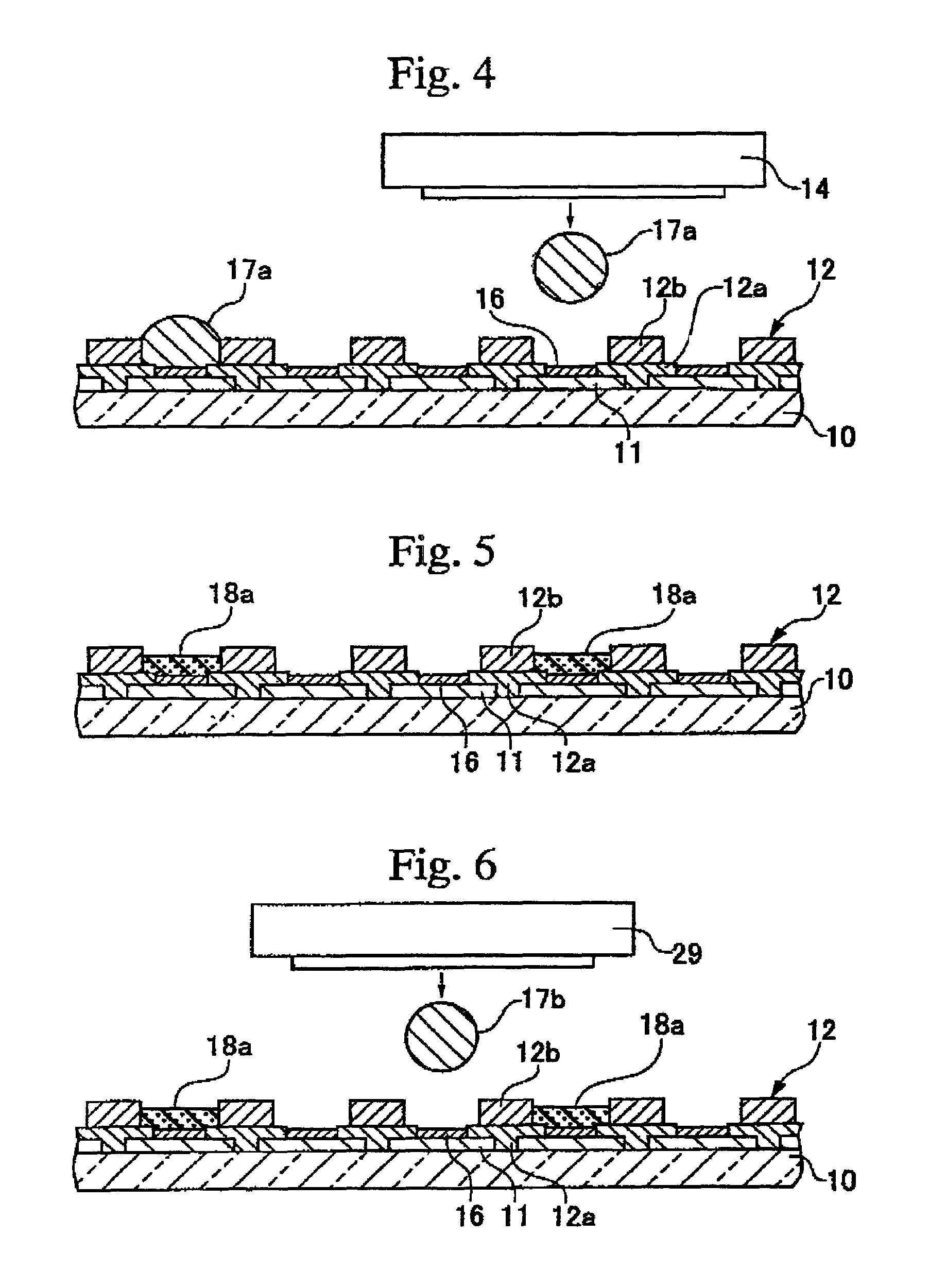Organic electro-luminescent device, manufacturing method for the same, and electronic equipment
a technology of electroluminescent devices and manufacturing methods, applied in the direction of identification means, instruments, liquid/solution decomposition chemical coatings, etc., can solve the problem of more problems of phase separation, and achieve the effect of superior display properties
- Summary
- Abstract
- Description
- Claims
- Application Information
AI Technical Summary
Benefits of technology
Problems solved by technology
Method used
Image
Examples
example 1
[0131]Initially, a blue light emitting layer was prepared by discharging the ink composition (blue) for a light emitting layer comprising a concentration of 1% (wt / vol) shown in Table 3, from an ink jet printer (MJ-930C manufactured by Epson) by 20 pl under an N2 gas flow, and then drying under the conditions of 25° C. and 1 atm.
[0132]Subsequently, a green light emitting layer was prepared by discharging the ink composition (green) for a light emitting layer including a concentration of 1% (wt / vol) shown in Table 2, into a neighboring opening 13 at 20 pl under an N2 gas flow, and then drying under the conditions of 25° C. and 1 atm.
example 2
[0133]Initially, a blue light emitting layer was prepared by discharging the ink composition (blue) for a light emitting layer including a concentration of 1% (wt / vol) shown in Table 3, from an ink jet printer (MJ-930C manufactured by Epson) at 20 pl under an N2 gas flow, and then drying under the conditions of 25° C. and 1 atm.
[0134]Subsequently, a red light emitting layer was prepared by discharging the ink composition (red) for a light emitting layer including a concentration of 1% (wt / vol) shown in Table 4, into a neighboring opening 13 at 20 μl under an N2 gas flow, and then drying under the conditions of 25° C. and 1 atm.
[0135]Thereafter, a green light emitting layer was prepared by discharging the ink composition (green) for a light emitting layer including a concentration of 1% (wt / vol) shown in Table 2, into a neighboring opening 13 at 20 pl under an N2 gas flow, and then drying under the conditions of 25° C. and 1 atm.
PUM
| Property | Measurement | Unit |
|---|---|---|
| thickness | aaaaa | aaaaa |
| thickness | aaaaa | aaaaa |
| temperature | aaaaa | aaaaa |
Abstract
Description
Claims
Application Information
 Login to View More
Login to View More - R&D
- Intellectual Property
- Life Sciences
- Materials
- Tech Scout
- Unparalleled Data Quality
- Higher Quality Content
- 60% Fewer Hallucinations
Browse by: Latest US Patents, China's latest patents, Technical Efficacy Thesaurus, Application Domain, Technology Topic, Popular Technical Reports.
© 2025 PatSnap. All rights reserved.Legal|Privacy policy|Modern Slavery Act Transparency Statement|Sitemap|About US| Contact US: help@patsnap.com



